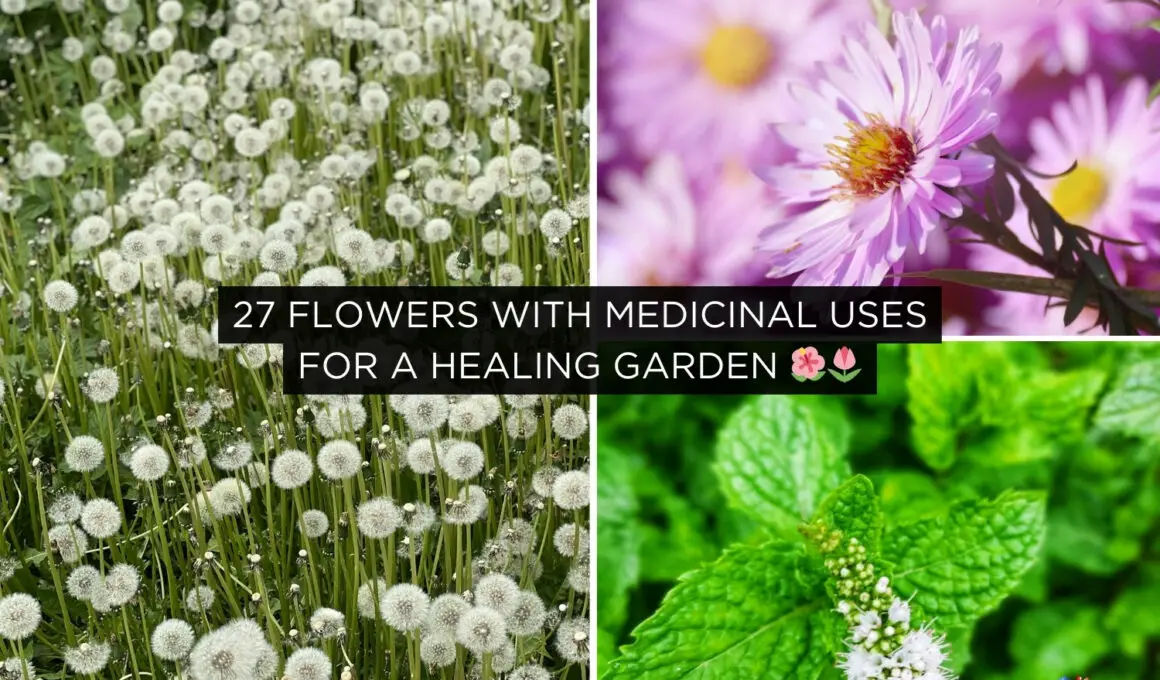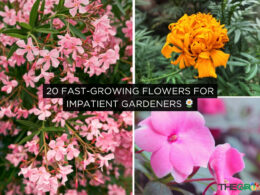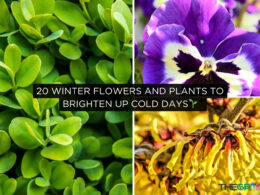In This Article Show
With over 13 years of gardening under my belt, I’ve come to appreciate the dual beauty and utility these plants bring to our spaces. Not only do they add color and vibrancy, but many possess healing properties that have been harnessed for centuries.
Creating a healing garden might sound complex, but it’s quite straightforward and rewarding. From soothing chamomile that can help ease us into a peaceful sleep, to the powerful echinacea known for its immune-boosting qualities, each flower in this list has been chosen for its proven medicinal benefits and ease of cultivation.
As we walk through this list of 27 medicinal flowers, I’ll share tips on how to grow and care for each one, ensuring your garden is not just a feast for the eyes but a source of natural remedies. So, let’s begin our journey into the world of healing gardens, where beauty meets utility most delightfully.
Top Flowers with Medicinal Uses
Let’s embark on a detailed exploration of the first few flowers from our list, focusing on their medicinal benefits and how you can grow them in your healing garden.
1. Chamomile (Matricaria recutita)

Chamomile is renowned for its calming effects, making it a staple in the realm of medicinal teas. Its gentle sedative properties help alleviate insomnia, reduce anxiety, and soothe nervous system disorders. Additionally, Chamomile possesses anti-inflammatory capabilities, beneficial for digestive health and skin irritations.
Chamomile thrives in well-drained soil under full sun to partial shade. Start seeds indoors 6-8 weeks before the last frost date or sow directly into the garden in spring. Thin plants to about 8 inches apart. Water regularly, but be cautious not to overwater. Chamomile is relatively low maintenance and can also benefit neighboring plants by improving their growth and health.
Get Gardening For Beginners
Our new EBOOK shows newcomers and green thumbs alike a step by step guide to growing the garden of their dreams.
2. Lavender (Lavandula)
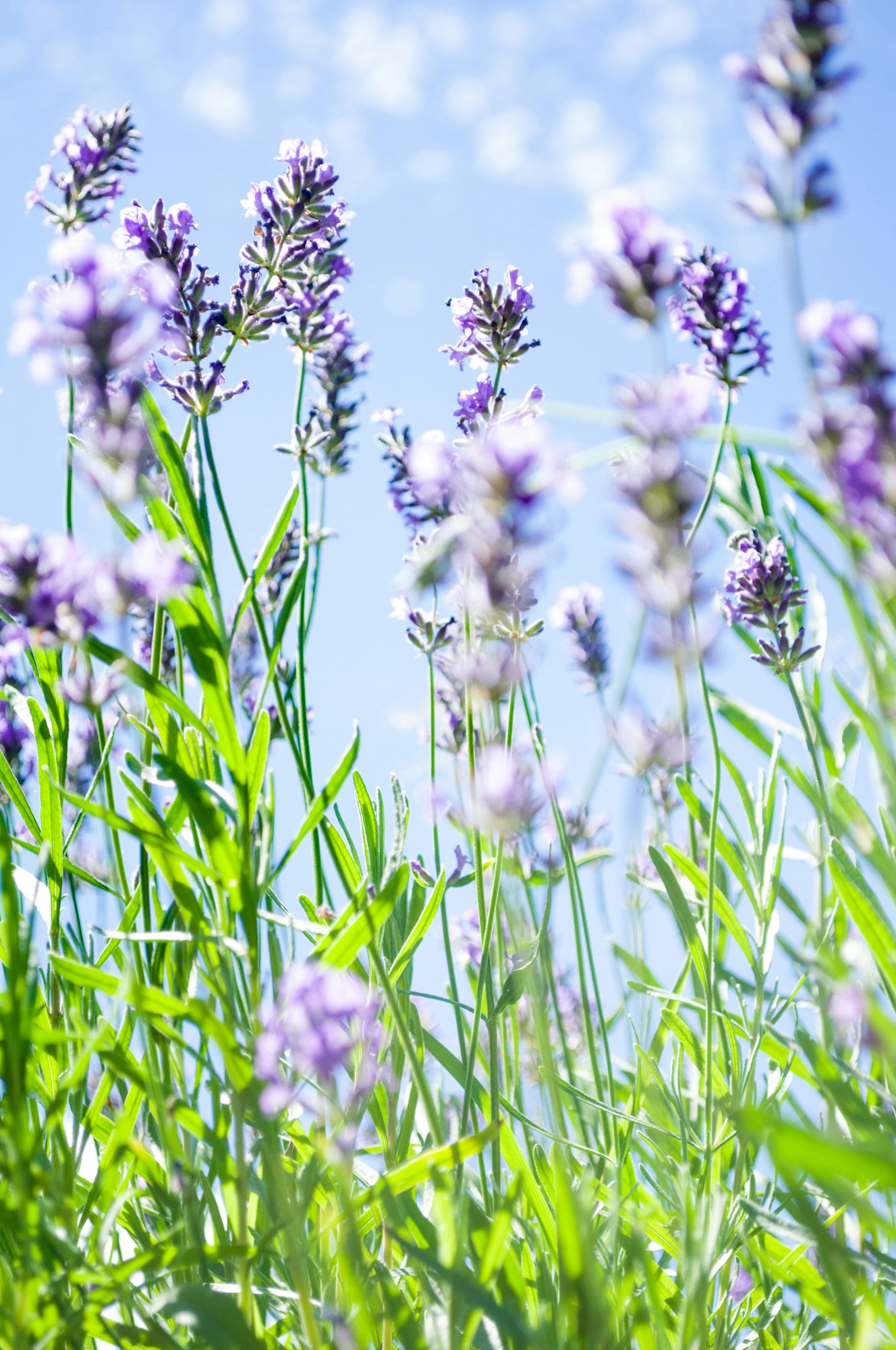
Lavender’s fragrance is widely acclaimed for its ability to promote relaxation and improve sleep quality. Its essential oils are used to reduce anxiety, stress, and insomnia, making it a perfect addition to a healing garden.
Lavender prefers full sun and well-draining slightly alkaline soil. It’s drought-tolerant once established but needs regular watering during the first growing season. Prune early in the spring to encourage bushiness. Lavender can be grown from seeds, but starting with young plants is often easier.
3. Echinacea (Echinacea purpurea)
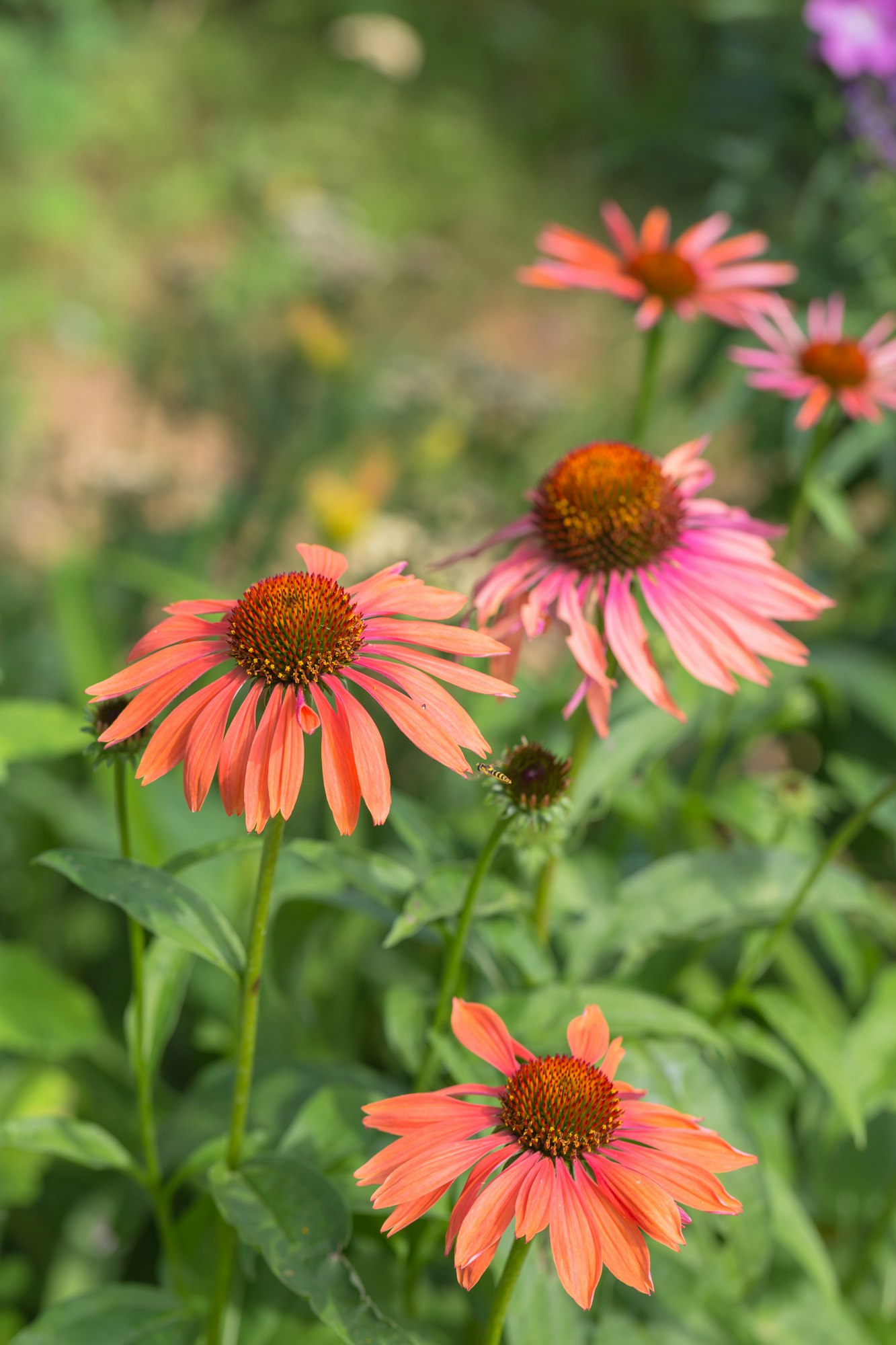
Echinacea is celebrated for its immune-boosting properties, making it effective in preventing and fighting colds, flu, and other infections. It’s also known for its ability to speed up wound healing.
Plant Echinacea in a spot with full sun to partial shade in well-drained soil. It’s tolerant of poor soil conditions and drought. Water regularly until they are established. Deadhead flowers to extend blooming or leave them in place to attract birds and beneficial insects.
4. Marigold (Calendula officinalis)
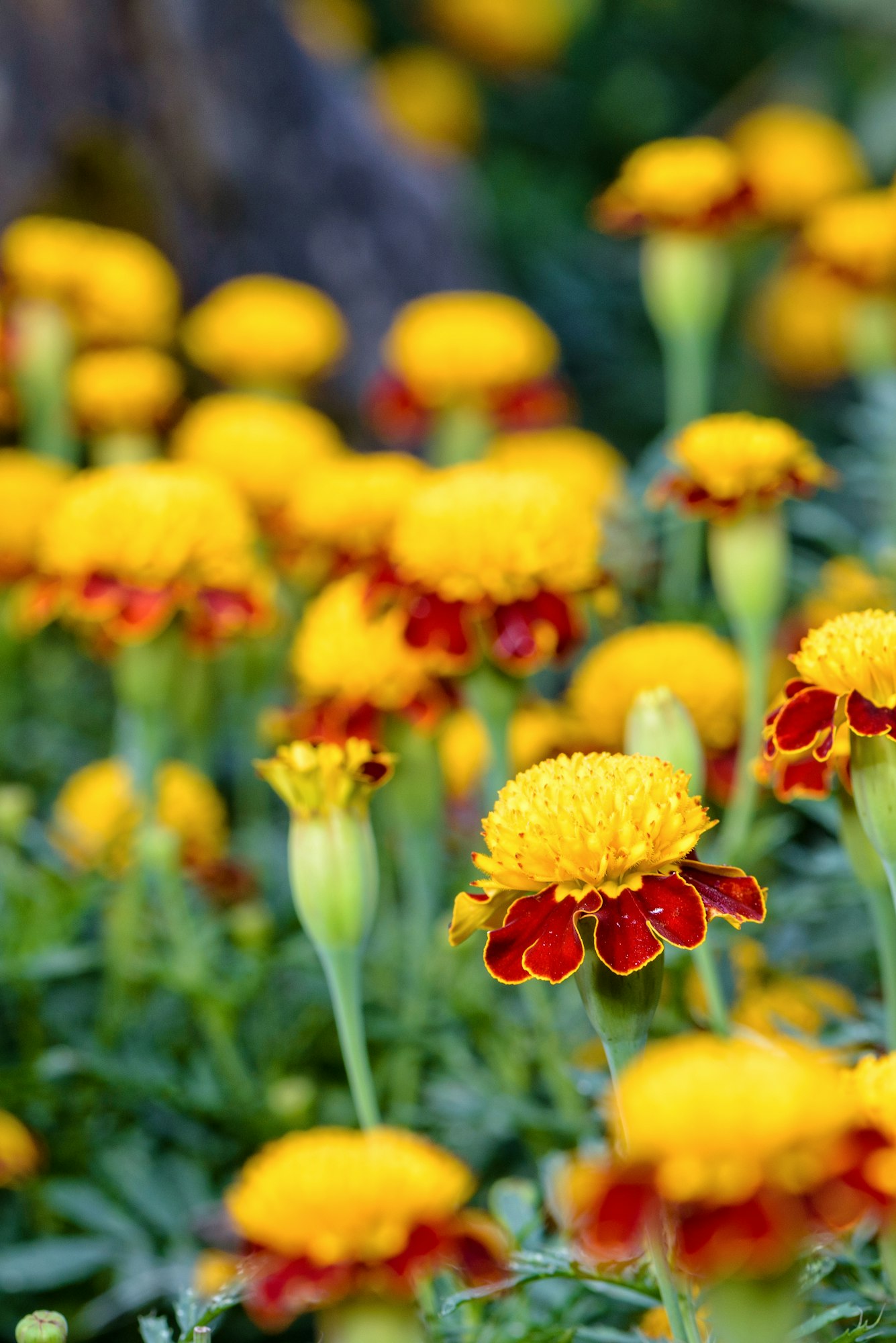
Marigold, with its bright, cheerful flowers, offers more than just visual appeal. It has antifungal, anti-inflammatory, and antibacterial properties, making it effective in treating skin irritations, cuts, and wounds.
Marigolds are incredibly hardy and can thrive in a variety of soil types, as long as they are well-drained. They prefer full sun but can tolerate partial shade. Sow seeds directly in the garden after the last frost and water regularly. Marigolds are also great for companion planting due to their pest-repellent properties.
5. Feverfew (Tanacetum parthenium)
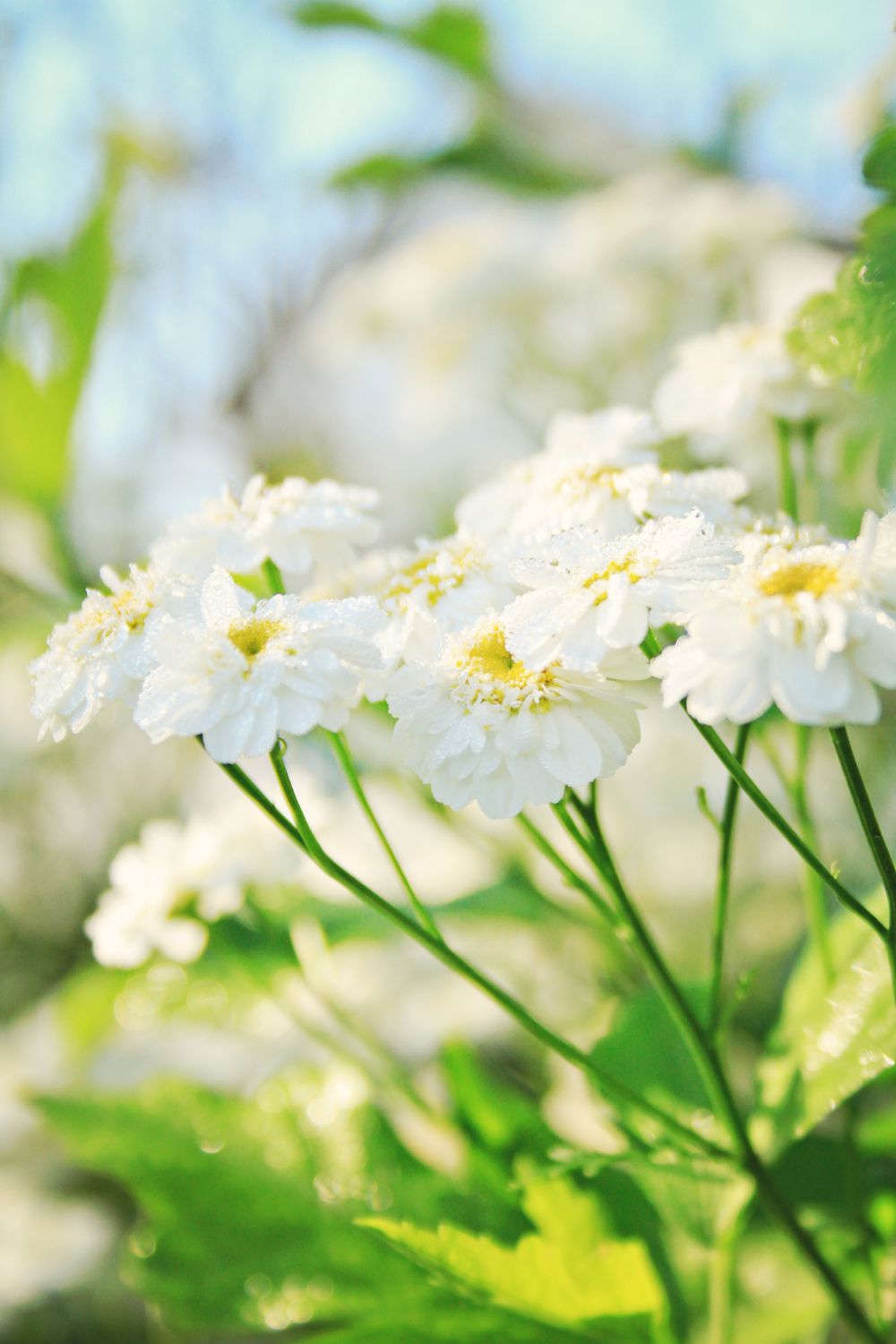
Feverfew has been traditionally used to prevent migraine headaches. It’s also known for its anti-inflammatory properties, helping to alleviate arthritis and reduce fevers.
Get Gardening For Beginners
Our new EBOOK shows newcomers and green thumbs alike a step by step guide to growing the garden of their dreams.
Feverfew prefers well-drained soil and full sun but can tolerate partial shade. It can be easily grown from seeds sown directly in the garden in spring. Once established, feverfew is quite drought-tolerant and can self-seed prolifically. Regular pruning can help control its spread and encourage more blooms.
6. Peppermint (Mentha × piperita)
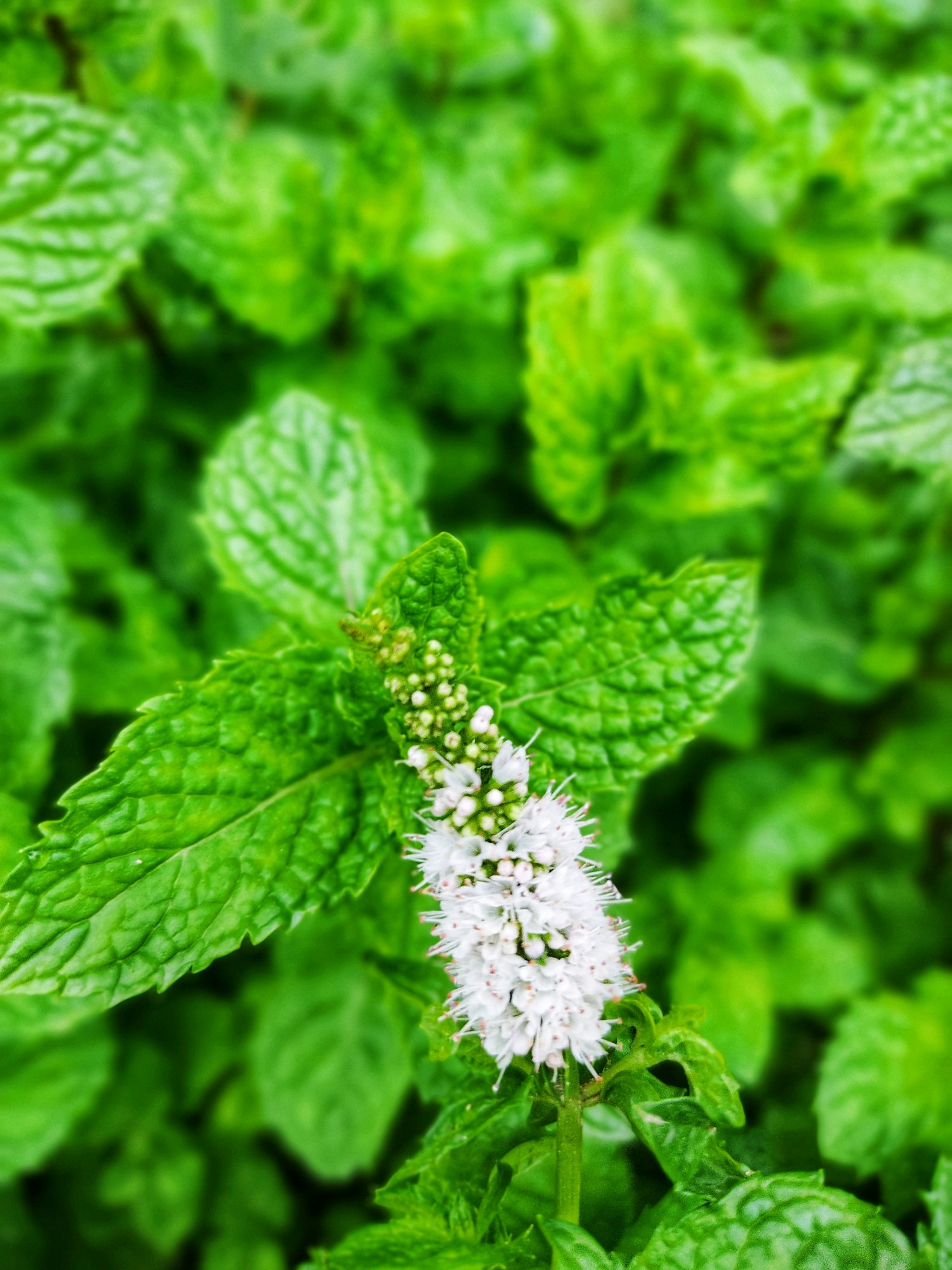
Peppermint is widely used for its soothing effect on the gastrointestinal tract, helping to ease indigestion, nausea, and irritable bowel syndrome (IBS). Its refreshing scent also aids in relieving headaches and improving mental focus.
Peppermint is a vigorous grower that prefers moist, well-drained soil and partial to full sun. It’s best grown in containers to prevent it from overtaking other plants in your garden. Water regularly and trim back to promote bushy growth. Harvest leaves as needed for fresh or dried use.
7. Yarrow (Achillea millefolium)
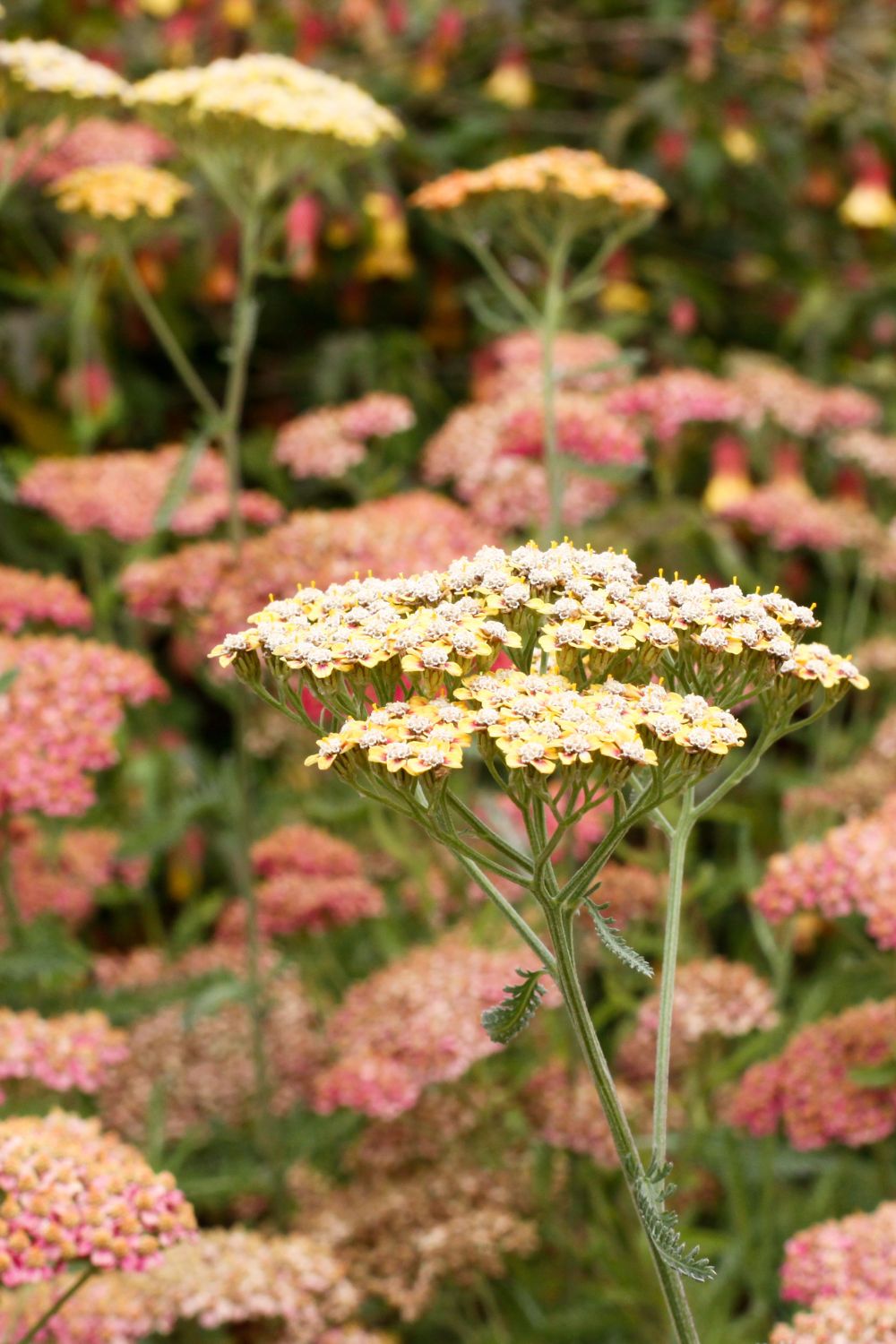
Yarrow is a versatile herb known for its ability to stop bleeding, heal wounds, and improve circulation. Its anti-inflammatory properties also make it beneficial in treating skin issues and easing digestive problems.
Yarrow prefers full sun and well-drained soil. It is drought-resistant once established, making it suitable for xeriscaping. Plant yarrow from seed or by dividing established plants in early spring or fall. Yarrow spreads easily and can be aggressive, so it might need to be contained or divided periodically.
8. Valerian (Valeriana officinalis)
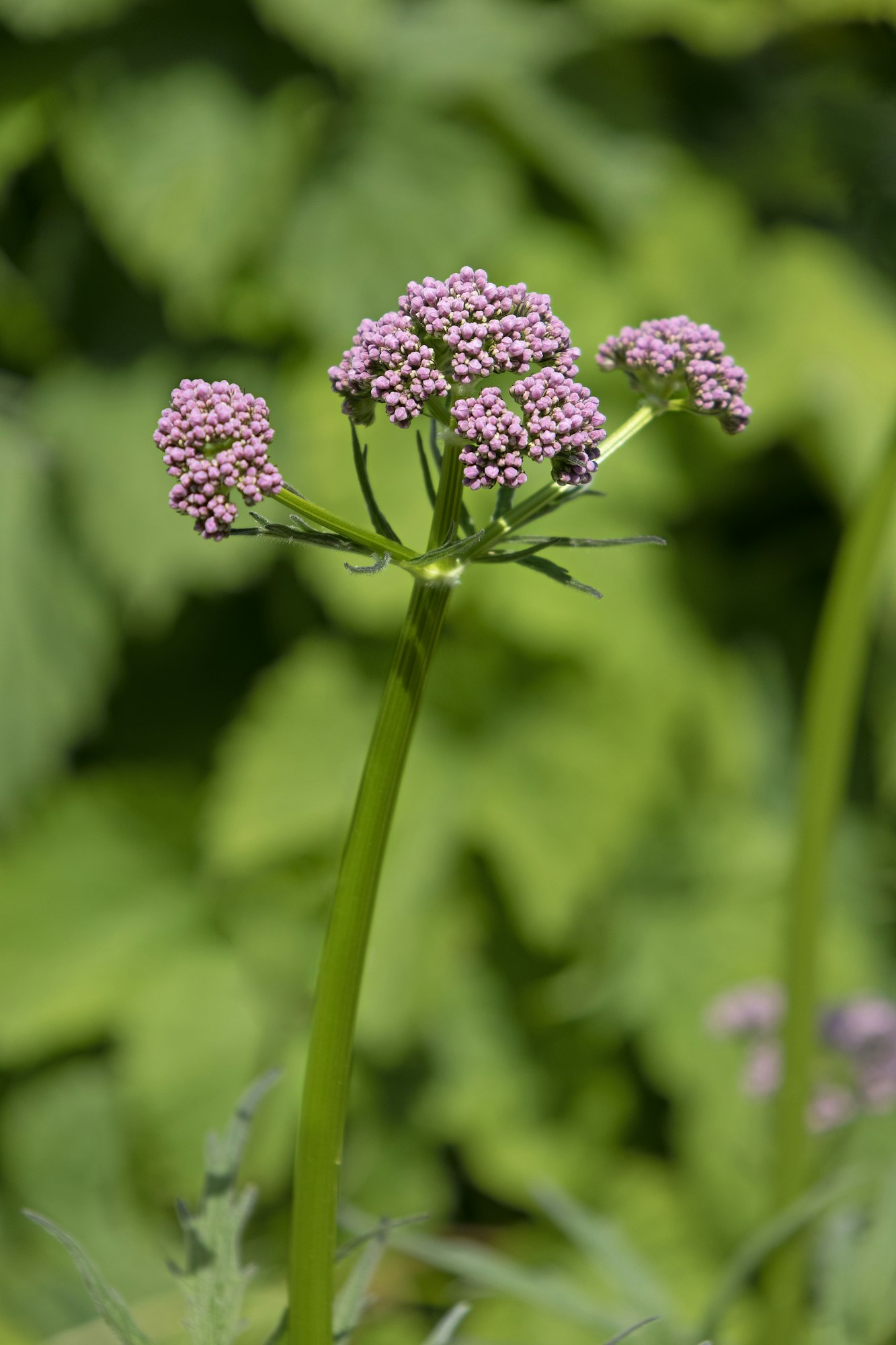
Valerian root is highly regarded for its sedative qualities, often used to promote relaxation and improve sleep quality. It can also help reduce anxiety and stress levels.
Valerian grows best in well-drained soil in full sun to partial shade. It prefers moist conditions but can tolerate short periods of drought. Plant seeds or young plants in the spring. Valerian can grow quite tall and may require staking. Harvest the roots in the fall of the second year.
9. St. John’s Wort (Hypericum perforatum)
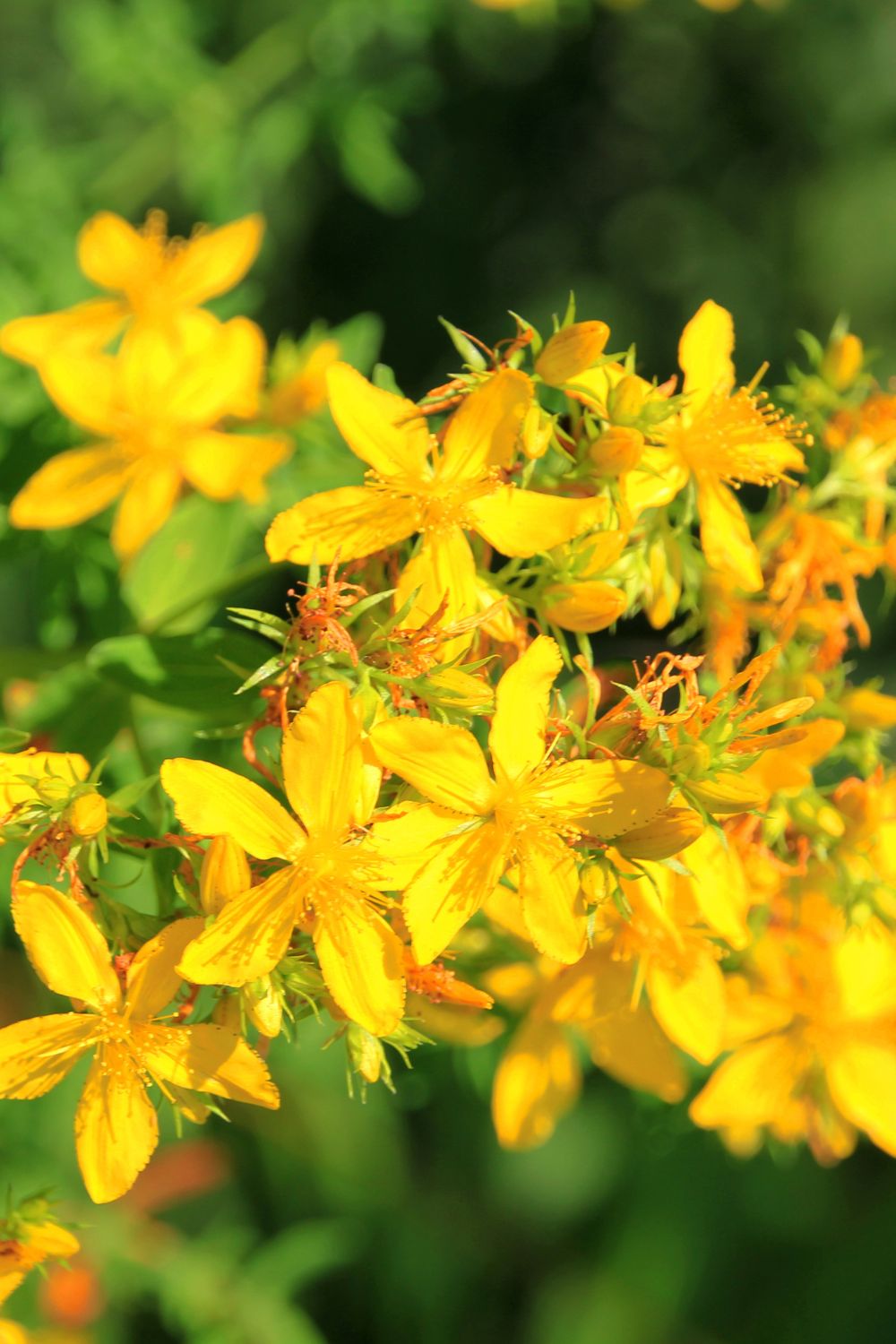
St. John’s Wort is widely known for its use in treating mild to moderate depression and anxiety. It also has antiviral and antibacterial properties, making it effective in wound healing.
St. John’s Wort prefers full sun but can tolerate partial shade. It thrives in well-drained soil and is relatively drought-tolerant once established. It can be propagated from seeds or cuttings and may self-seed in the garden. Be mindful of its invasive nature in certain regions.
10. Rosemary (Rosmarinus officinalis)
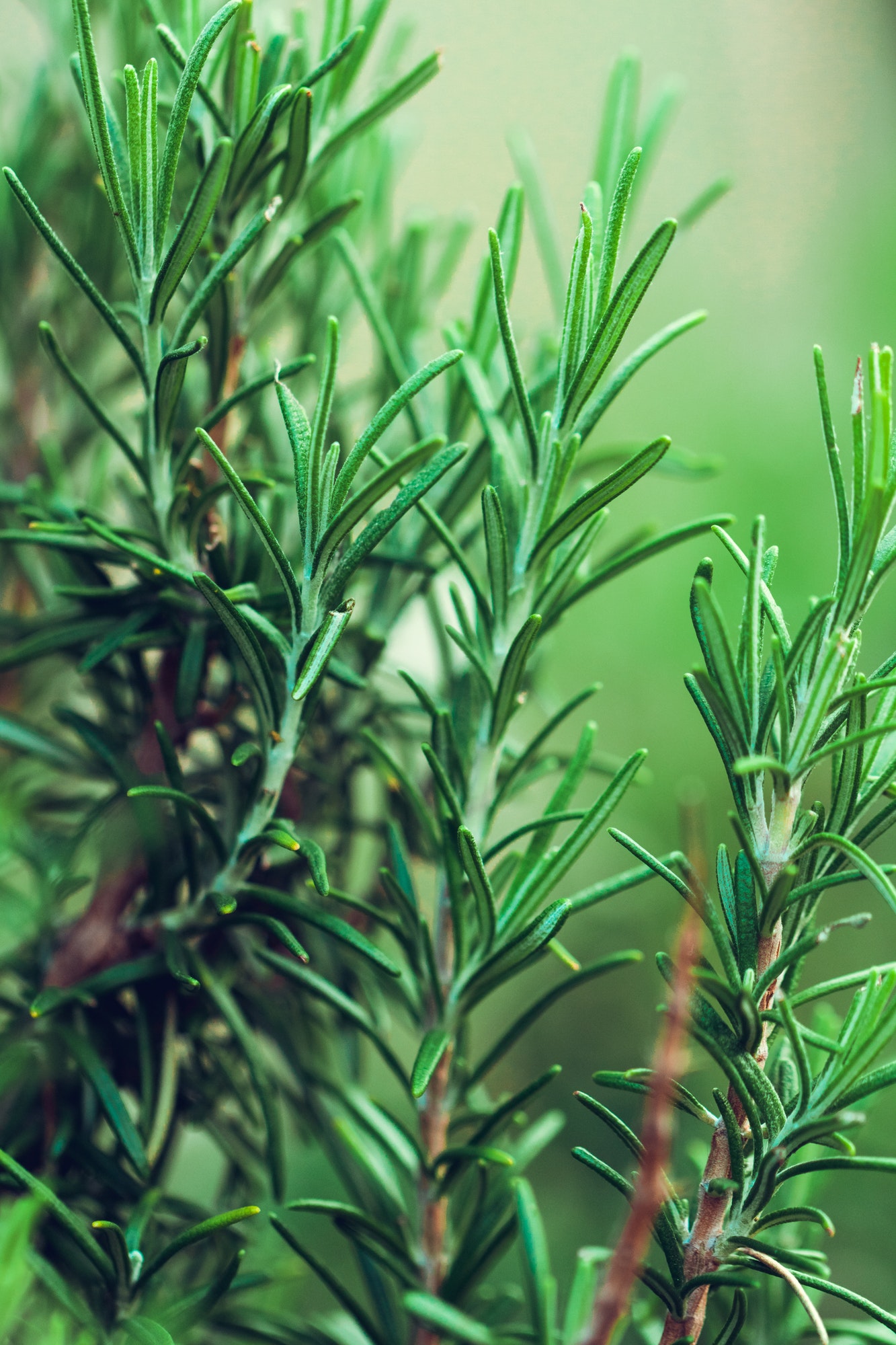
Rosemary is not just for culinary use; it also enhances cognitive function and memory. Its aroma alone can improve concentration, performance, speed, and accuracy in mental tasks. Rosemary thrives in full sun and well-drained soil. It is drought-tolerant and prefers not to be overwatered. Plant rosemary in the ground or in containers that can be brought indoors in regions with harsh winters. Prune regularly to encourage growth and prevent it from becoming woody.
11. Thyme (Thymus vulgaris)

Thyme is known for its antibacterial properties, making it an effective remedy for coughs and sore throats. It can also aid digestion and boost immunity. Thyme prefers full sun and well-drained, sandy soil. It is drought-tolerant and makes an excellent ground cover or container plant. Thyme can be propagated from seed, cuttings, or division. It requires little maintenance but benefits from occasional trimming to promote bushy growth.
12. Lemon Balm (Melissa officinalis)
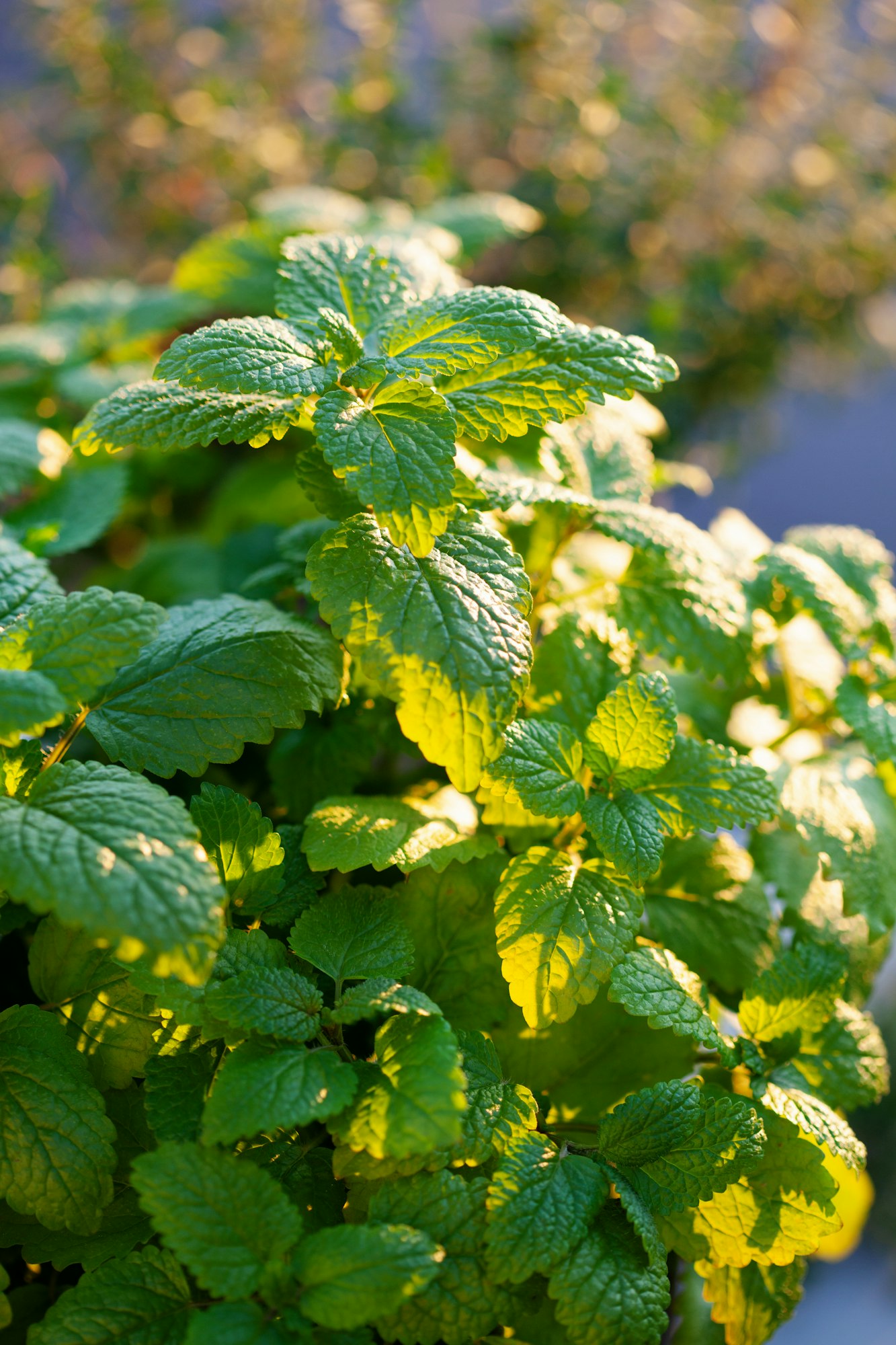
Lemon balm is used to reduce stress, and anxiety, and promote sleep. Its mild sedative effect makes it a popular choice for herbal teas. Lemon balm prefers well-drained soil and partial to full sun. It can be invasive, so consider planting it in containers to contain its spread. Regular harvesting of the leaves encourages new growth and can be dried or used fresh.
13. Sage (Salvia officinalis)
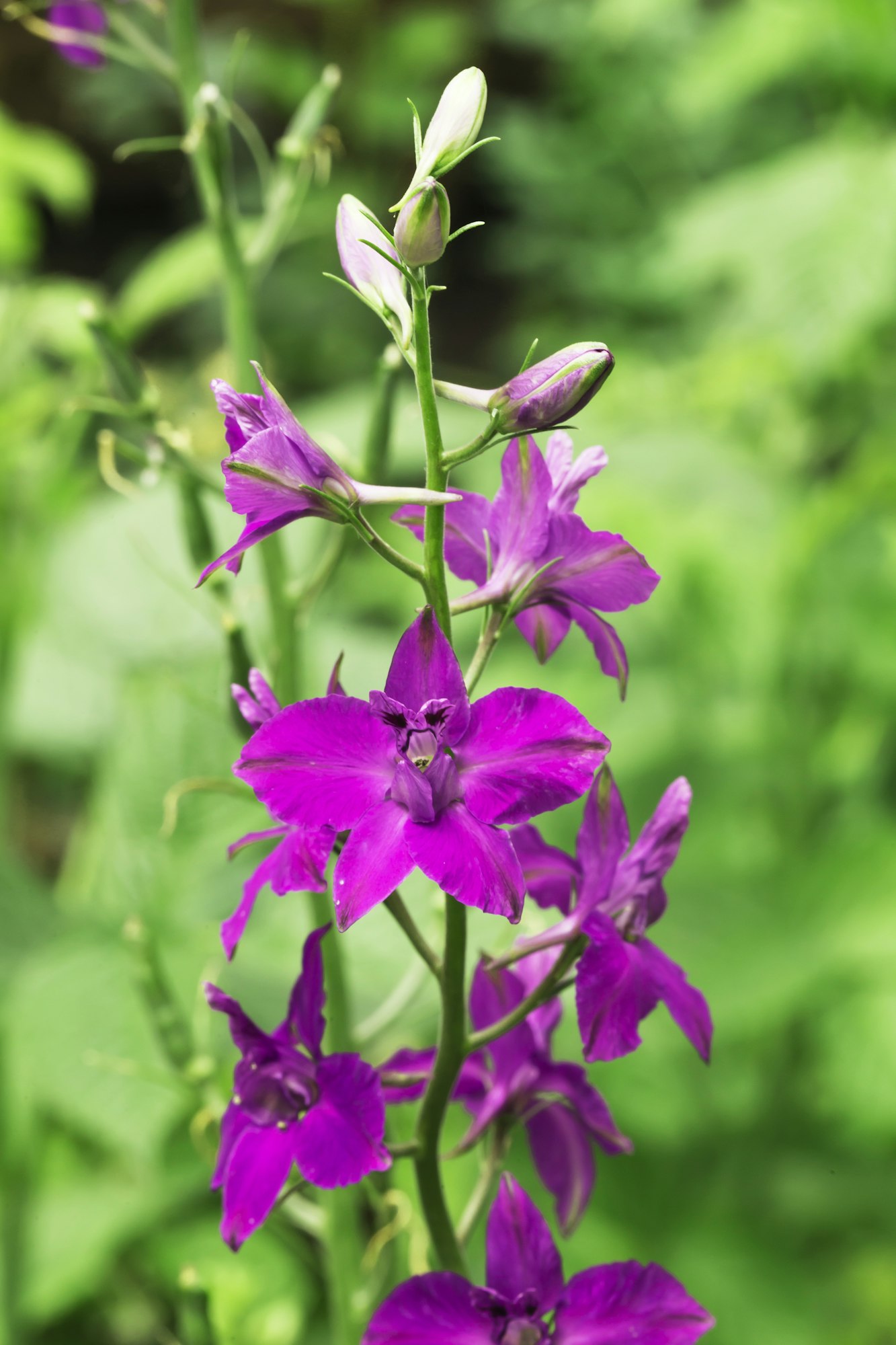
Sage is renowned for its antioxidant and antimicrobial properties, making it beneficial for oral health, sore throat relief, and even memory enhancement. Its leaves can be used fresh or dried in teas and culinary dishes.
Sage prefers full sun and well-draining, sandy soil. It’s drought-tolerant once established, requiring minimal watering. Plant sage from cuttings or seedlings for best results, ensuring they’re spaced about 18-24 inches apart to allow for growth. Prune regularly to encourage a bushy structure and prevent woodiness.
14. Dandelion (Taraxacum officinale)

Often considered a weed, dandelion is a powerhouse of nutrition and medicinal benefits. It supports liver function, detoxification, and is a rich source of vitamins and minerals.
Dandelion grows readily in most conditions but prefers full sun and rich, moist soil. You can harvest the leaves, flowers, and roots of dandelion. Since it’s prolific, controlling its spread might be necessary, but embracing its growth can offer numerous health benefits.
15. Milk Thistle (Silybum marianum)
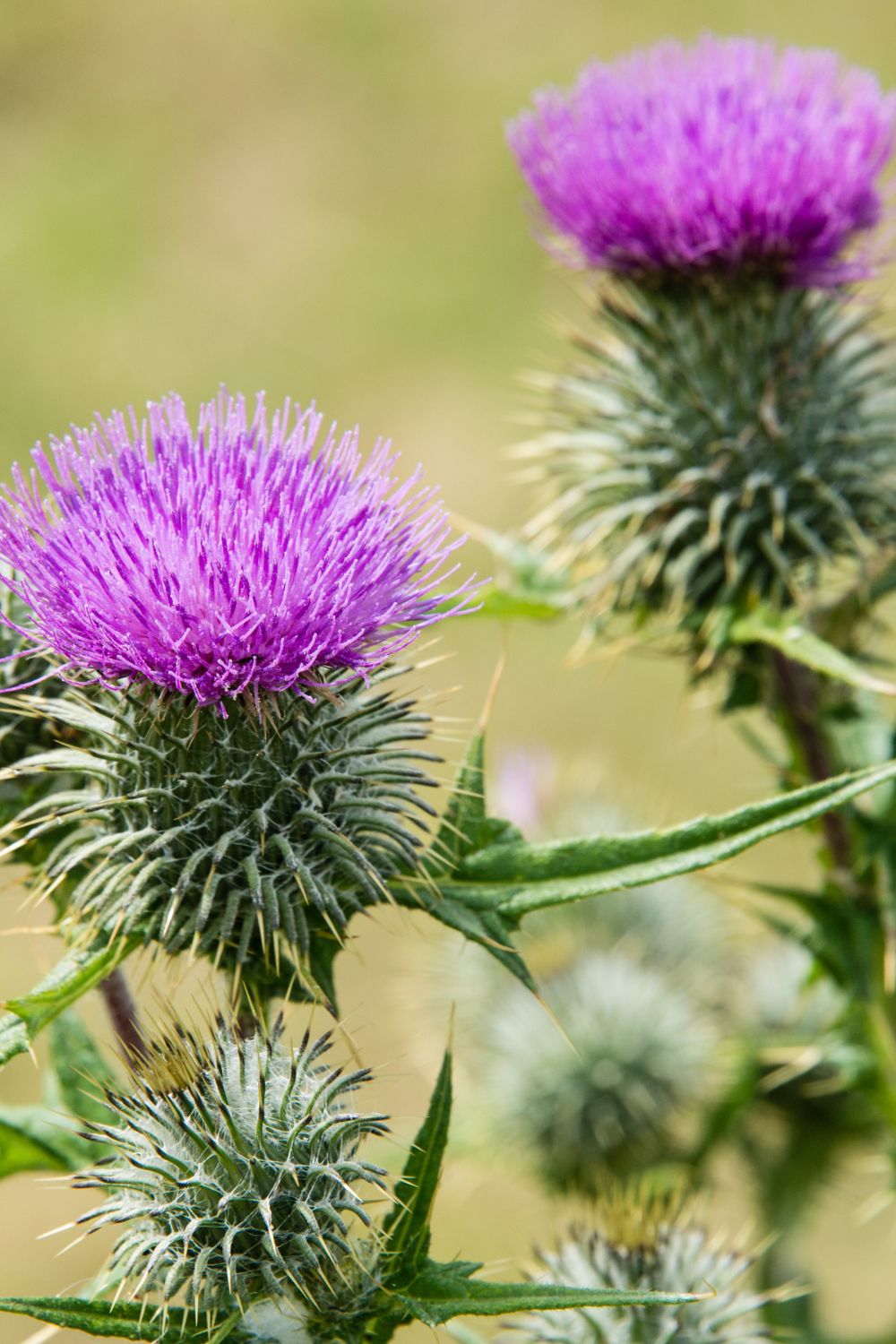
Milk Thistle is primarily known for its protective effects on the liver, aiding in detoxification processes and supporting liver health through its active component, silymarin. Milk thistle needs full sun and well-drained soil. It’s quite drought-resistant once established.
Sow seeds in early spring, in rows spaced about 30 inches apart. Milk thistles can grow tall, so spacing is important. The plant is biennial, and its flowers can be harvested in the second year.
16. Borage (Borago officinalis)

Borage is celebrated for its anti-inflammatory properties and support for adrenal health. Its flowers and leaves are edible, offering a cucumber-like flavor. Borage prefers full sun to partial shade and well-drained soil. It can tolerate poor soil conditions and is known for self-seeding.
Plant borage seeds directly in the garden in early spring. Water regularly, but avoid over-watering. Borage can grow quite large, so allow space for it to spread.
17. Hibiscus (Hibiscus rosa-sinensis)
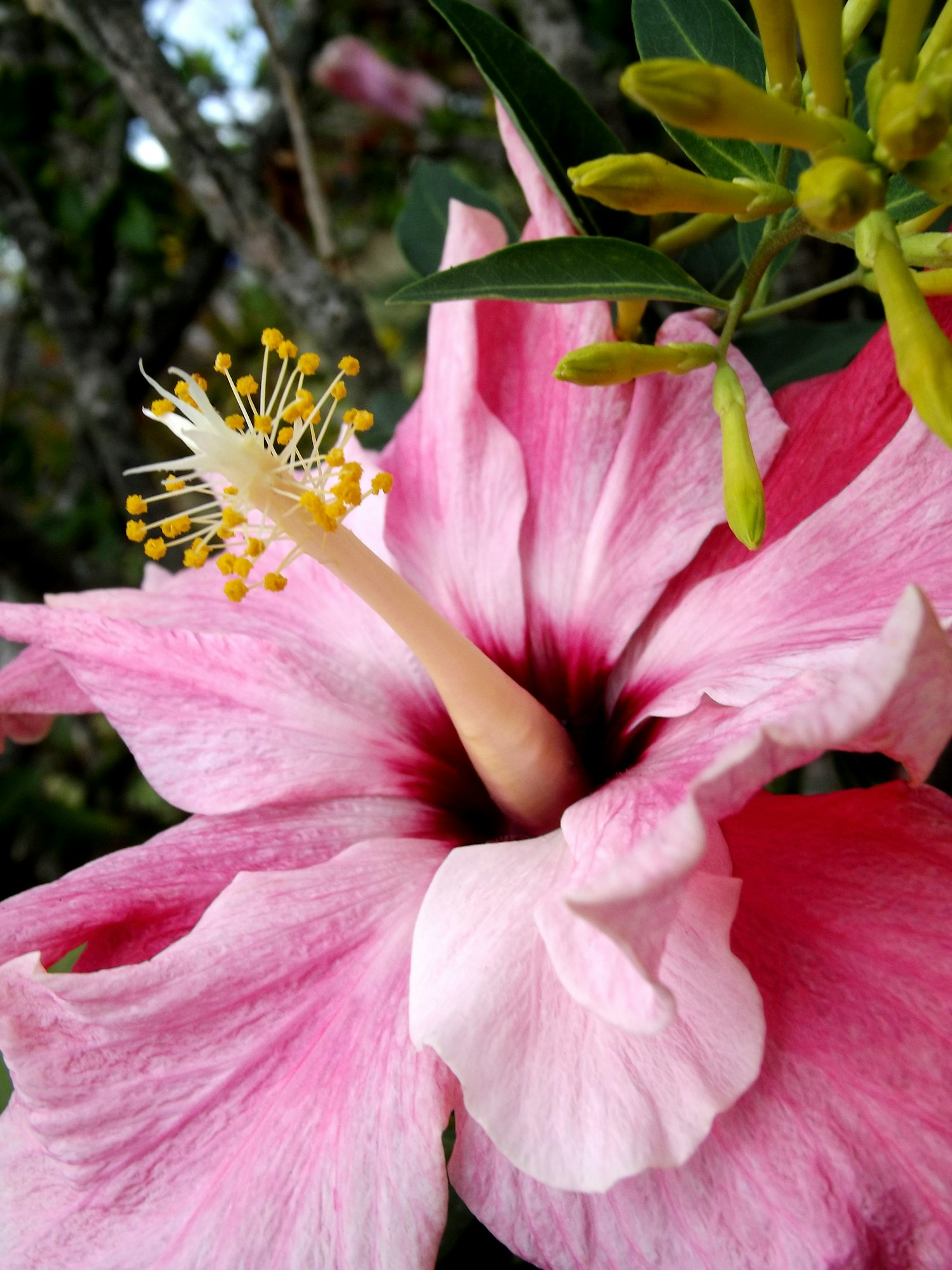
Hibiscus flowers are used in teas to help lower blood pressure, reduce high cholesterol levels, and promote cardiovascular health. Its tangy flavor is both delicious and therapeutic. Hibiscus requires full sun and well-drained, fertile soil. It thrives in warm conditions and should be watered regularly. Plant hibiscus in a protected area to shield it from strong winds. Mulch around the base to retain moisture and regulate soil temperature.
18. Jasmine (Jasminum)
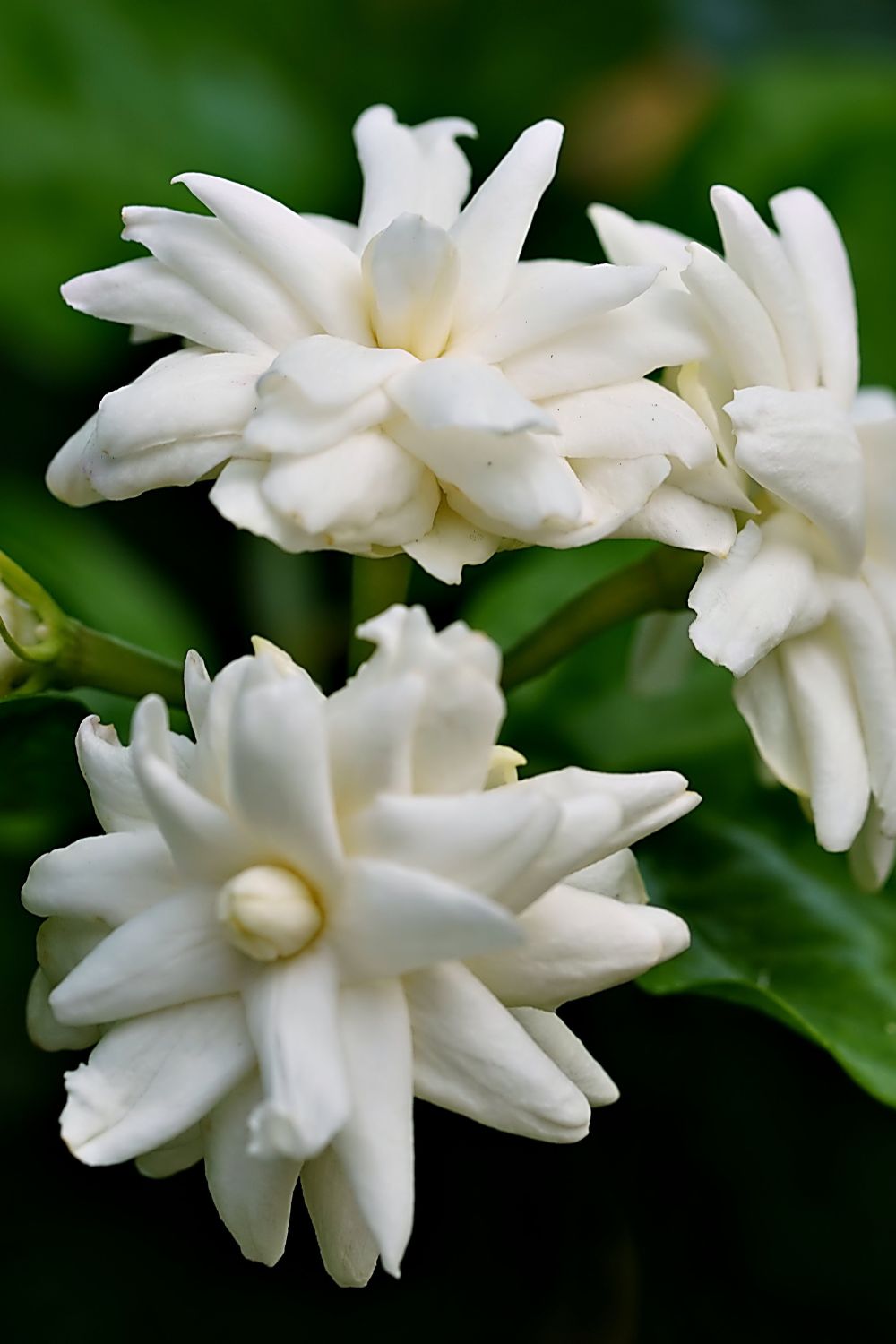
Jasmine is valued for its soothing scent, which is believed to have calming effects on the nervous system, promoting relaxation and a sense of well-being.
Jasmine plants prefer well-drained, sandy loam soil and full sun to partial shade. They need regular watering during the growing season but less so in winter. Support climbing varieties with a trellis or fence. Prune after flowering to maintain shape and promote new growth.
19. Calendula (Calendula officinalis)
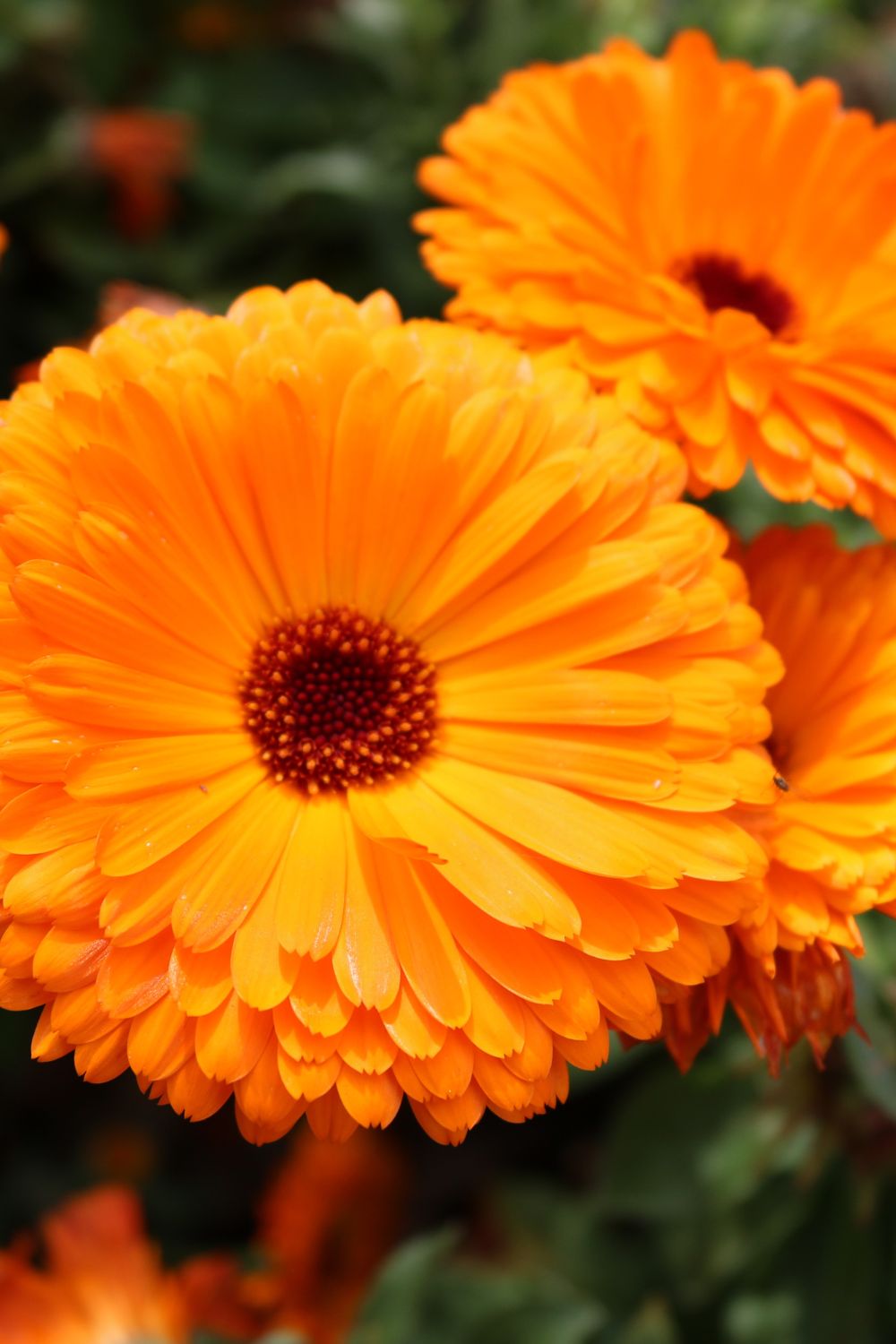
Calendula is widely used for its healing properties, especially in skincare, due to its anti-inflammatory, antifungal, and antibacterial qualities. It’s effective in healing wounds, burns, and rashes.
Calendula prefers full sun but can tolerate partial shade. It’s not fussy about soil but thrives in moderately fertile, well-drained soil. Sow seeds directly in the garden in spring or fall. Water regularly but avoid over-watering. Deadhead spent flowers to encourage continuous blooming.
20. Aloe Vera (Aloe barbadensis miller)
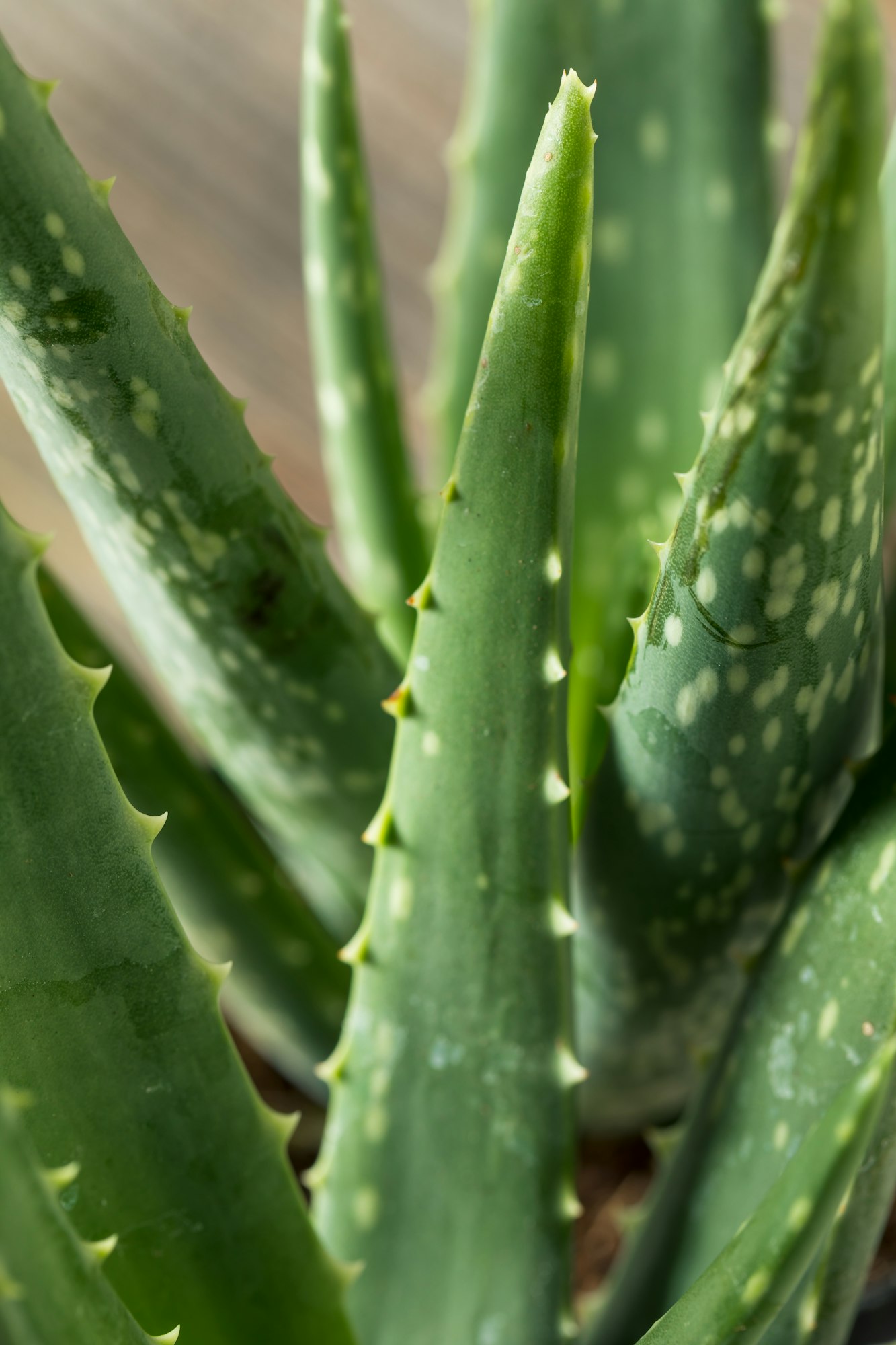
Aloe Vera is famous for its soothing gel, which is ideal for treating burns, and sunburns, and hydrating the skin. It also has antimicrobial properties, making it beneficial for wound healing. Aloe Vera needs bright, indirect sunlight and well-draining soil. It’s best grown in containers with a mix designed for succulents to prevent waterlogging, which can lead to root rot.
Water your Aloe Vera plant deeply but infrequently, allowing the soil to dry out completely between waterings. Place it in a warm, sunny spot, and be cautious of cold temperatures, as it is susceptible to frost damage.
21. Ginkgo (Ginkgo biloba)
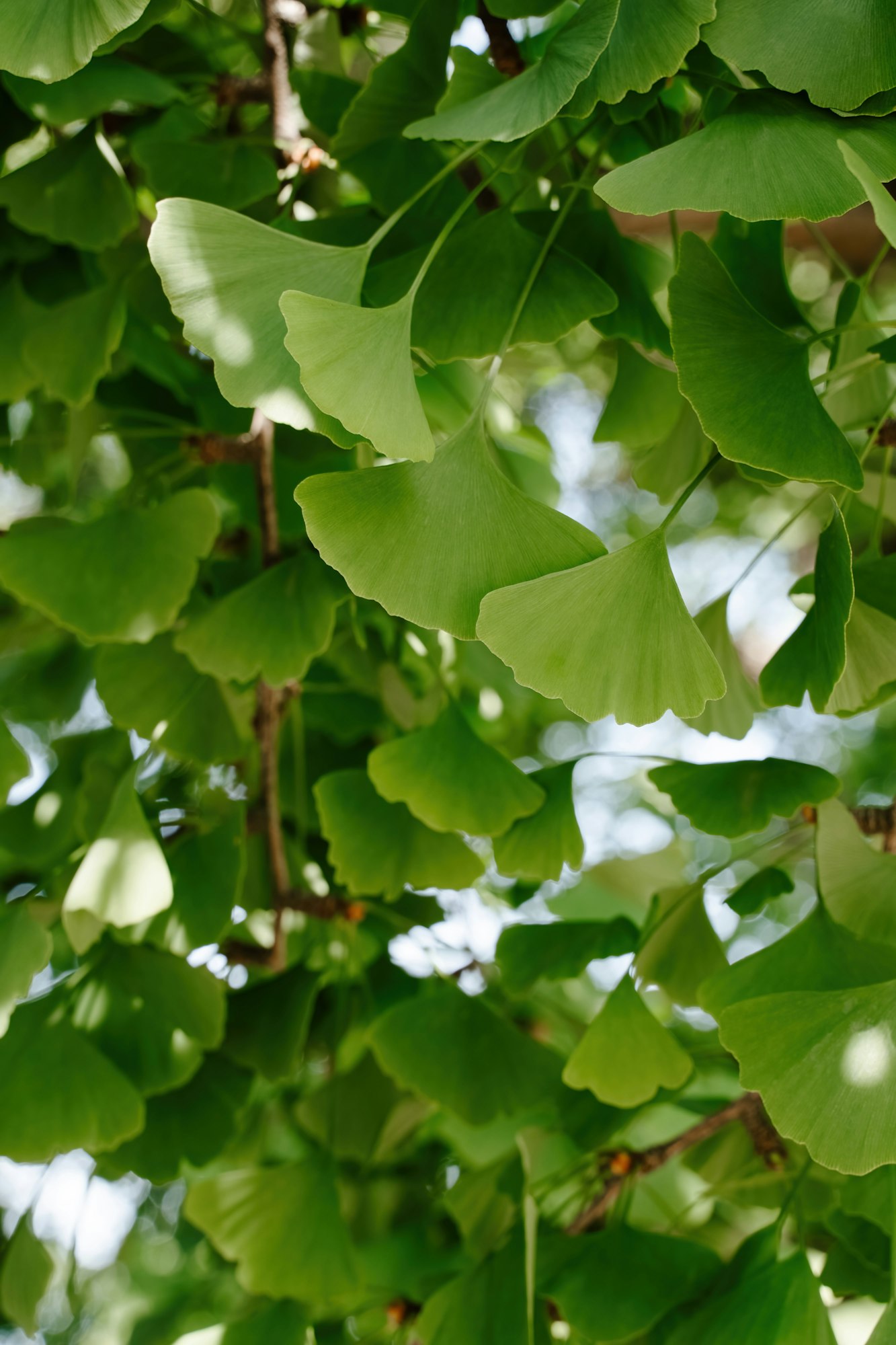
Ginkgo biloba is revered for its ability to enhance cognitive function and improve blood circulation. It’s commonly used in treating memory issues associated with aging and promoting overall brain health. Ginkgo trees require a location with full sun to partial shade and well-drained soil.
They are adaptable to many soil conditions and urban environments. Plant ginkgo in the fall or spring and water regularly to establish a strong root system. Ginkgo trees can grow very large, so consider their mature size when planting.
22. Passionflower (Passiflora)
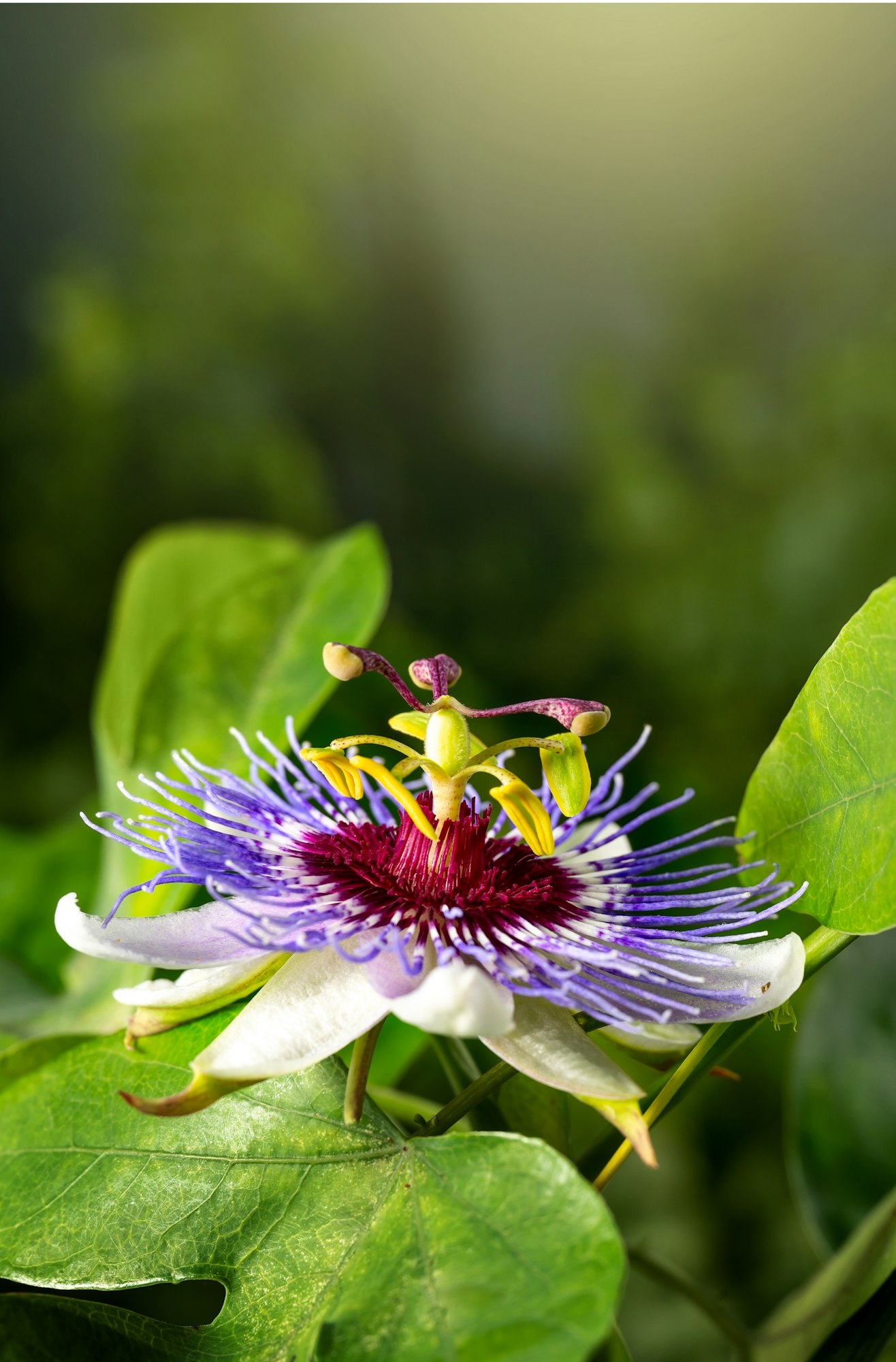
Passionflower is known for its calming effects, making it an effective natural remedy for anxiety and sleep disorders. Its beautiful flowers are a bonus to its therapeutic benefits.
Passionflower vines thrive in full sun to partial shade and well-drained soil. They need a structure to climb on, such as a trellis or fence. Plant in early spring and water regularly, especially during dry periods. Prune in late winter to control growth and promote flowering.
23. Arnica (Arnica Montana)
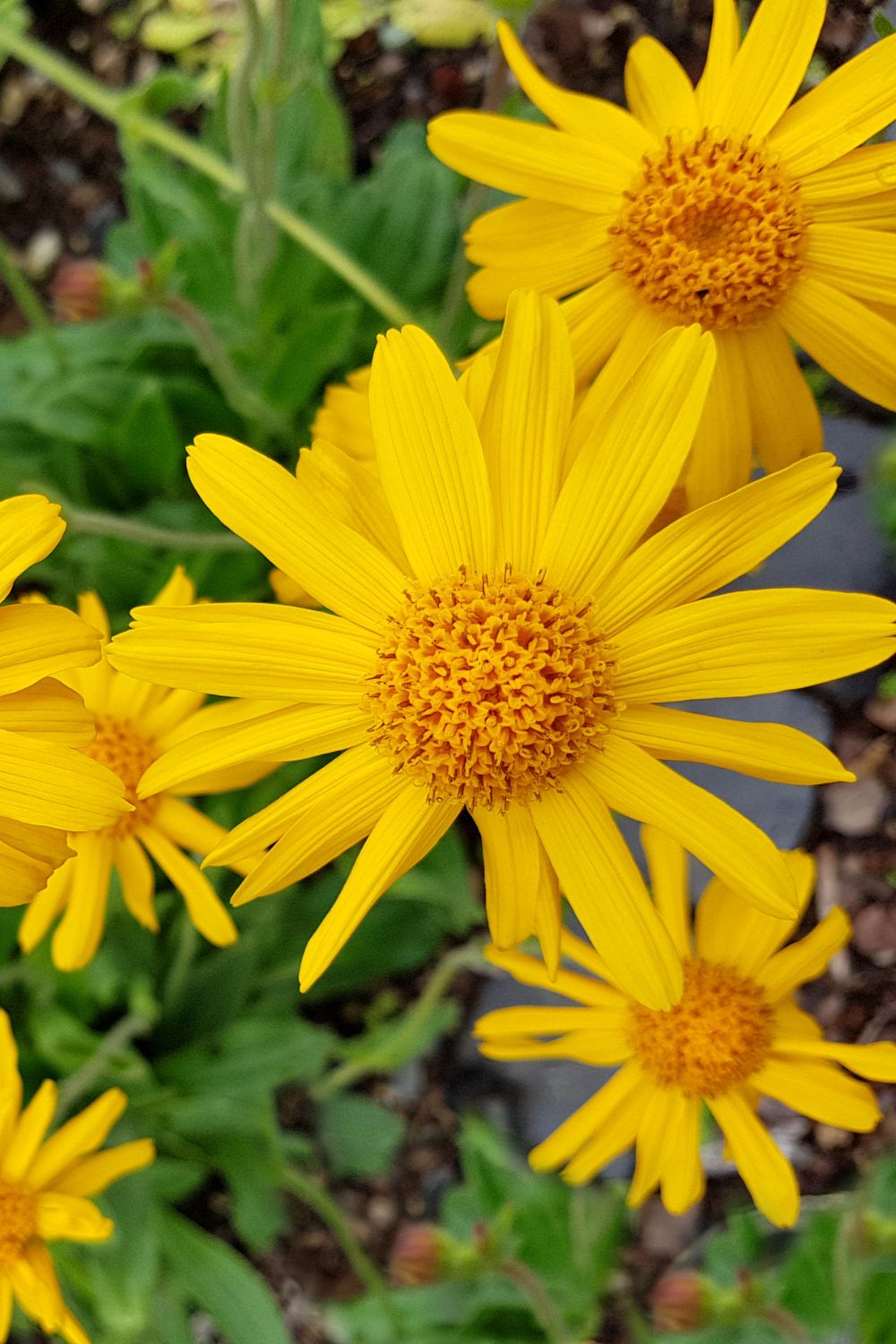
Arnica is widely used in topical treatments for bruises, sprains, and muscle soreness due to its potent anti-inflammatory and pain-relieving properties. It’s a must-have for natural first aid.
Arnica prefers full sun to light shade and well-drained, acidic to neutral soil. It can be challenging to grow from seed, so starting with plants or division is recommended. Water regularly, but do not overwater, as Arnica does not like wet feet. Harvest flowers in late spring or early summer for use in salves and creams.
24. Violet (Viola)
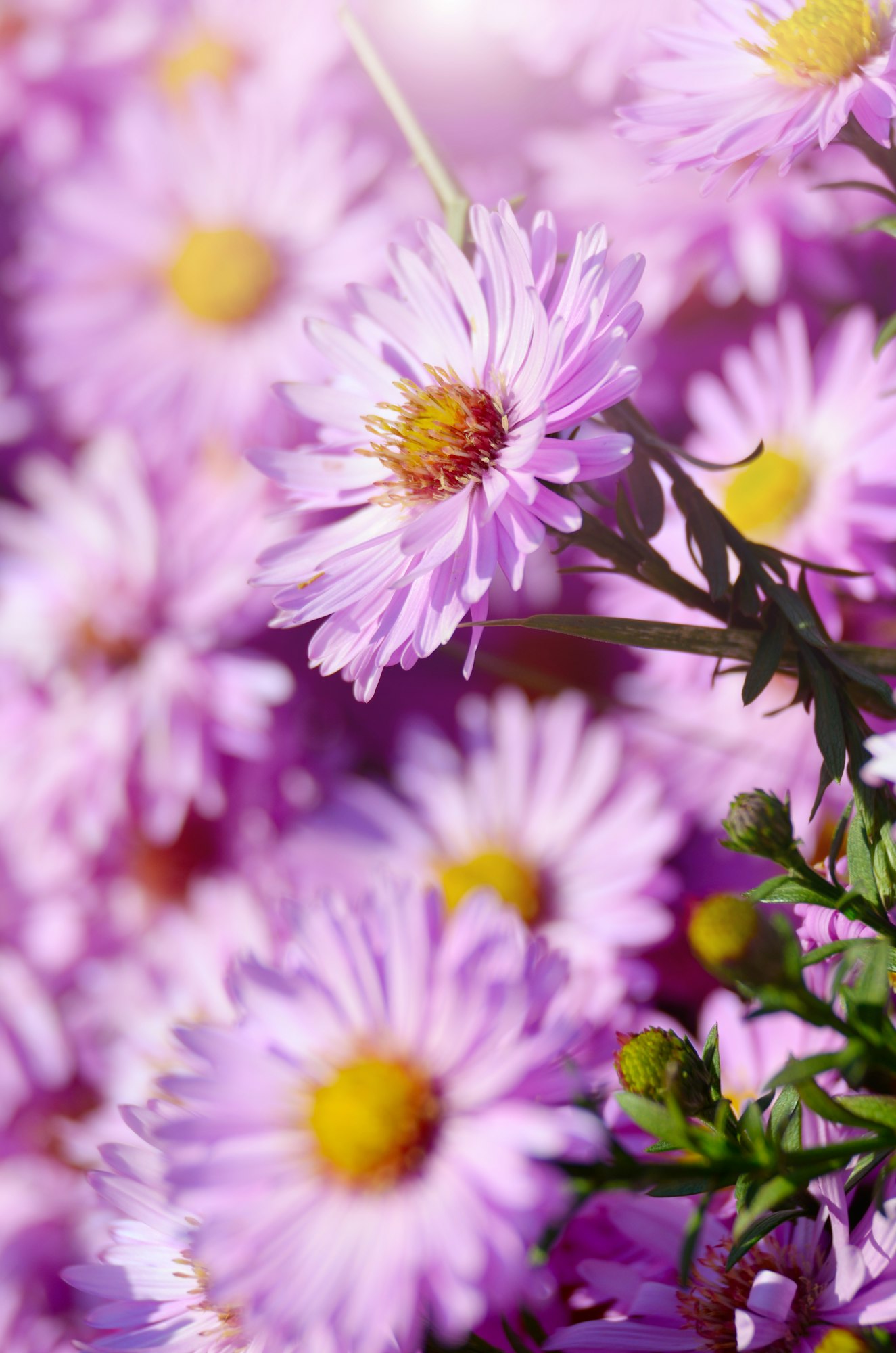
Violet is valued for its mild sedative properties, its ability to soothe the respiratory system, and its use in treating various skin conditions. The flowers and leaves are edible, adding beauty and health benefits to dishes.
Violet plants prefer cool, moist conditions and can thrive in both full sun and partial shade. They are ideal for shady spots where other plants might not grow. Plant in rich, well-drained soil and keep the soil moist. Violets can spread quickly through self-seeding, so manage their growth as needed.
25. Sunflower (Helianthus)

Sunflowers are not only striking in appearance but their seeds are packed with nutrients beneficial for heart health and boosting the immune system. They are rich in vitamin E, magnesium, and selenium. Sunflowers thrive in locations with direct sunlight and prefer long, hot summers.
Plant seeds in well-drained soil, and provide support for taller varieties to protect them from wind. Water regularly during the growing season, especially during dry periods. Sunflowers are relatively easy to grow and make a stunning addition to any garden.
26. Poppy (Papaver somniferum)
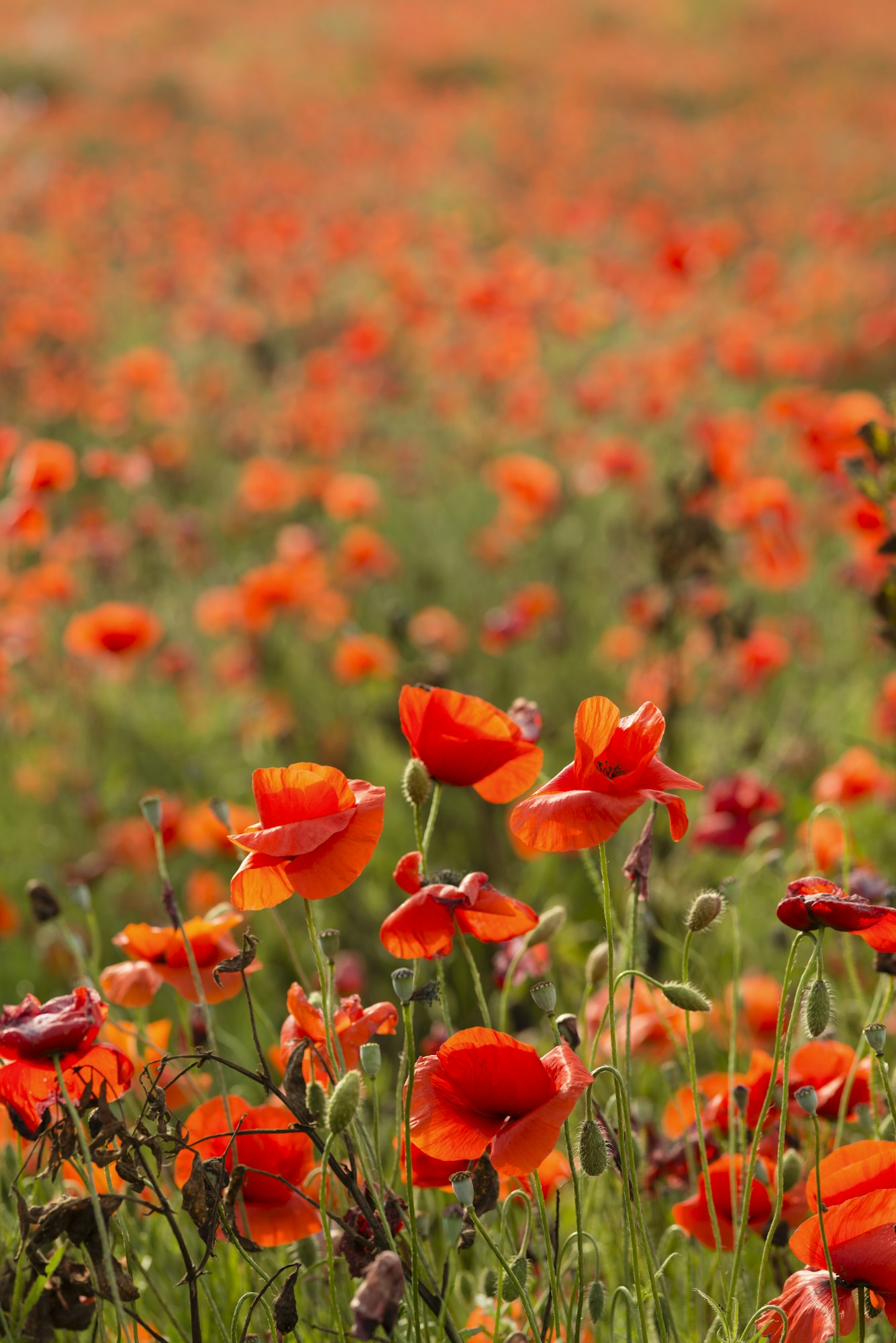
The poppy plant, particularly its seeds, is known for its calming and pain-relieving properties. While the opium poppy has a complex legal status due to its narcotic derivatives, many gardeners grow non-narcotic varieties for their beauty and culinary seeds.
Poppies prefer full sun and well-drained soil. They are best sown directly into the ground as they do not transplant well. Scatter seeds in late fall or early spring where you want them to grow, as poppies self-seed and can become naturalized in the garden. Be mindful of local regulations if considering opium poppy varieties.
27. Lotus (Nelumbo nucifera)

The lotus flower holds significant spiritual symbolism and is valued for its edible seeds and roots, which can aid digestion and promote a healthy gut. Lotus plants require a pond or a deep water feature to thrive. They prefer full sun and calm, warm water conditions.
Plant lotus tubers in heavy clay soil within a water-tight container and submerge in the pond at a depth that allows the leaves to float on the surface. Lotus plants can be prolific bloomers under the right conditions, adding a serene and exotic touch to your garden.
Integrating these plants into your healing garden not only promotes biodiversity and adds beauty but also taps into the ancient tradition of using plants for their medicinal properties. Each plant offers unique benefits, and with the right care, your garden can become a source of health, wellness, and tranquility.





